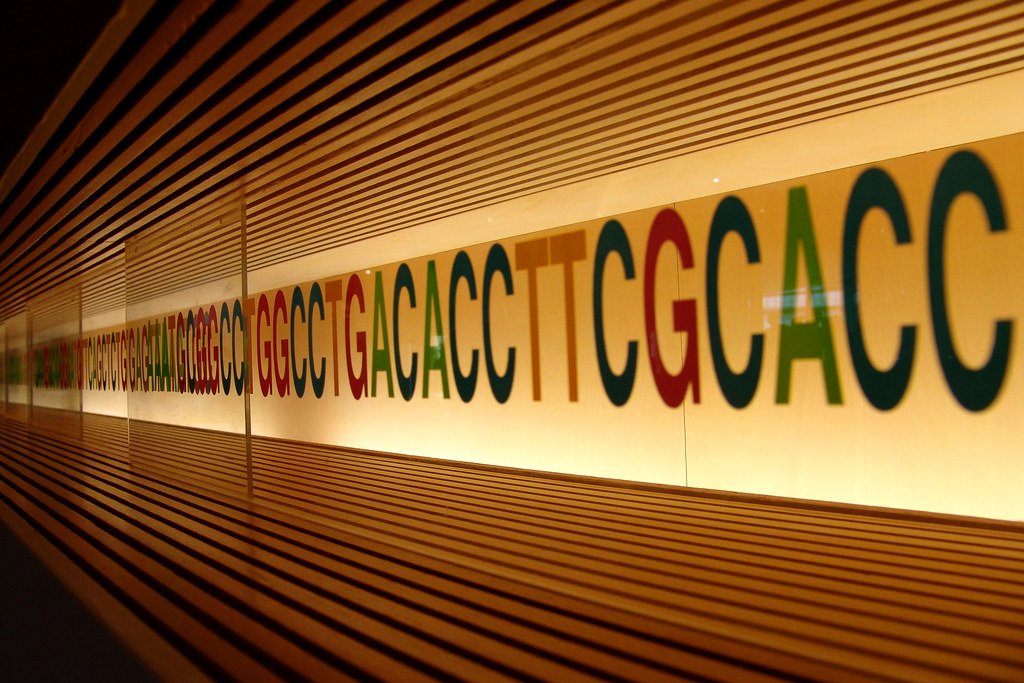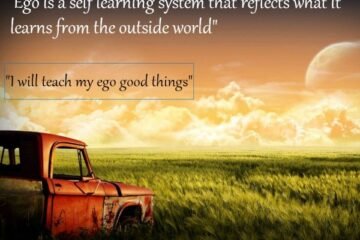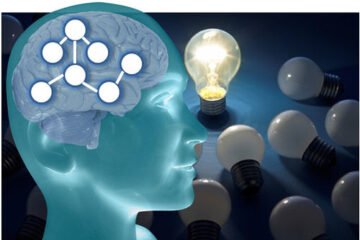The Self-Concept: A review framing the DNA-Self
Rogers’ View of the Self-Concept: Carl Rogers described self-concept as the organised set of perceptions and beliefs a person holds about themselves. He believed that the “real self” (the authentic, innate self) often diverges from the “ideal self” (the self shaped by external expectations), and the gap between the two can lead to psychological distress. Rogers emphasised congruence, which is the alignment between the real self and the ideal self, as being key to psychological health and self-actualisation [Rogers, 1961].
DNA-Self and Developmental Stages: The Theory of the DNA-Self, posits that the human self-concept develops in stages, beginning with the innate self (the “DNA-self”) and becoming increasingly shaped by lived experience, social learning, and the interaction between nature and nurture. This means that, at different developmental stages, the self-concept is a blend of ancestral and learned self-understandings:
Infancy (0–2 years)
The self-concept is rooted in innate, biological tendencies, with early attachment and sensory experience shaping the beginnings of self-awareness. The “behavioural patterns” and innate abilities (e.g., motor skills, vocalisation, emotional regulation) are dominant.
The theory of the DNA-self suggests that initially, a new-born child will have a schema pre-populated with reflexes as well as higher level, intuitive responses, and that there is an intuitive symbolic interface, which automatically seeks to link these genetically passed-on intuitive responses to external symbols and patterns.
We can therefore see, that these reflex responses, which include panic responses such as fight-or-flight, must sit in compartmentalised schemas, which have priority access, and must also be highly optimised, to ensure rapid execution.
This concept supports social intuitionism, it suggests that as the infant develops, it will intuitively collect symbols and patterns, and try to match those to pre-existing organismic functions, which the organism knows have been tried and tested, and fine-tuned with each new generation since that function was first created.
We also suggest, that the schema holding an automatic, genetically originated system response, can be over-written or modified. In other words, as the child’s cognitive abilities increase, and it’s symbolic brain matches patterns into action, via brain to motor connections held in the schema, then this, itself will allow the child’s thoughts to negotiate itself through all of those symbols to eventually arrive at a coordinated movement.
Therefore, we can see that as the child grows intellectually more complex, then these automatic responses will be modified, if needed, and also, new intuitive reflexes can be created, to be passed on, to future generations.
We can therefore also confirm support for Kohlberg’s Stage Theory, in that this intuitive localisation allows for responses to be both highly automatic and intuitive, but also, for the individual to choose to not follow an intuitive response, and to take time to think of another way.
Early Childhood (2–7 years)
The self-concept becomes more shaped by social learning, imitation, and early experiences. Such experiences will cause a “mask” of adaptations to form, these, in effect modify those innate self-truths, both causing, and also, potentially hiding incongruence with that original true, innate self.
This may cause the child to feel increasing amounts of discomfort, as there is great potential for them to lose connection with their authenticity, due to this loss of their “wholesome” self. This may well happen as part of “normal” childhood, as the child learns to comply with social and parental expectations.
At the same time, natural, innate abilities start to be discovered and explored. In a negative environment, if early attempts at are cause rejection or gaslighting-type behaviour, then that child may reject, for example, the idea of being an artist. This, according to the theory may cause then to deny their true “calling”, causing distress, that the initial incongruent assumption, becomes so stressful, that the child will force itself to forget the whole idea that they might be good at art. Simply because their carer failed to appreciate their effort, or was too distracted, at that time.
Middle Childhood (7–12 years)
The self-concept becomes more complex, as the child compares their self to others, internalises feedback, and begins to form a more stable self-image. The “ideal self” (the self as they wish to be) becomes more prominent, sometimes leading to incongruence if the real self is suppressed.
Much depends on the toxicity of the environment of the child, but it is safe to assume that their mask will be collecting both adaptive, and maladaptive coping methods. Layering those later, more linguistically precise compared to earlier versions from younger selves.
Often those layers are not reviewed and maintained, and the child is not truly aware that every time they choose to behave in ways not true to their true innate abilities and preferences, then this will add to their internal tension. A tension, now more difficult to understand, due to that complexity of that coping stack.
Adolescence and Adulthood
The self-concept is a complex interplay of inherited self-understandings, a great many innate abilities and preferences may have now been completely obscured, possibly to the point of completely forgetting those innate needs. Yet, that lack of wholeness now takes it’s toll, and the young adult finds there is little to feel good about themselves. Their lack of wholeness may now be presenting as a gnawing emptiness inside, they may hate their body, they may find they are falling into distractive additions, and even drugs as a desperate form of self-medication.
Response to toxicity, or lack of authenticity?
The Theory of the DNA-Self proposes that although we can see this build up of inner incongruence as incongruent and maladaptive coping patterns. There is also a view, that it is the lack of authenticity that may be something we should focus on, instead of proposing more and more “sticky patch” style fixes that really, tend to add to their personal incongruence and denial.
SwitchStep is a simple, but effective music therapy, using drum and dance, over a two month period, to show children, and really, people of all ages, that they can, with the right intention, drum or dance themselves towards a future, more authentic self, providing them with increased resilience to the challenges of life, with skill to help them negotiate those challenges, rather than avoid them, rather than deny themselves the opportunity to confront that challenge and overcome it.
SwitchStep Therapy uses a combination of verbalised positive intentions, empowered by conscious binary awareness switching (drumming with both hands, or dancing with two feet, whilst holding in mind the idea that they are manifesting that future, ideal, and also authentic self, into their future. Sessions are fun, and the guidance aimed at positive proactive steps to avoid lying about themselves, without needing to defend their intention to not lie, but to also, stay safe.
Drumming with intention to be your best, authentic self
A key aspect of this approach, is to make children aware of self-limiting habits and behaviours. For example, as the start of the course, they will be discouraged from setting any specific image of their ideal future self. Instead, we suggest a far broader initial ides, of simply drumming their idea, that they will become “their best self”, and they will be told about natural abilities, and how they need to be open to any potential future. This is not a hard and fast rule, but the idea is that they need to understand that many ways of thinking are negative, and some simple rules can help them avoid making negative decisions about themselves, in response to peer pressure.
Restoring Access to Ancestral DNA, without trying
A significant aspect of this theory, and therapy, is the suggestion that needed ancestral DNA self-regulating functions can become overwritten, and we can put in its place a maladaptive or incongruent process, that may cause both physical and emotional regulatory dysfunction. We believe that this be the cause of a number of degenerative diseases, later in life.
Our suggestion is that by concentrating on ones authenticity, while using binary switching with an intent for it’s restoration, that original version of ones behavioural processes, can be restored.
The Role of Innate and Learned Self-Understandings
Ancestral/DNA Self: This is the innate self, shaped by genetics and early neurodevelopment. It includes the “core propensities,” temperaments, and self-regulatory systems that are present from birth.
Learnt Self: The learnt self is shaped by environment, experience, culture, and socialisation. It includes adaptive coping strategies, learned self-concepts, and the “ideals” and “conditions of worth” that shape behaviour.
Balance and Integration: The DNA-Self approach recognises that the healthy self is a balance of ancestral and learnt self-understandings. The therapy helps participants reconnect with their innate self, while also integrating and making sense of their lived experience. This is crucial for restoring self-regulation, self-acceptance, and resilience.
The DNA-Self View of Development
Stages and Self-Concept: At each developmental stage, the mix of ancestral and learned self-understandings shifts, often with the learnt, “static” self the becoming dominant. Our therapy allows the participant to explore and recover that ancestral authenticity, through a structured set of eight music sessions, each aimed at progressively informing attendees of the positive way they can choose to live, armed with the self-confidence of authenticity, and the mental skills and self-development skills they will need to protect it, and restore it, as they continue through like.
Rogers’ Influence: The DNA-Self approach is rooted in Rogers’ humanistic view, emphasising self-actualisation, congruence, and authenticity [Rogers, 1961].
Developmental Integration: The self-concept develops in stages, blending ancestral DNA-based intuitive decision-making, as well as learned self-understandings. The DNA-Self informed therapy helps restore balance by integrating both in a congruent way.
Balance and Authenticity: The discovery and expression of innate abilities is a key part of the DNA-Self process, helping participants reconnect with their authentic self and restore resilience.
Rogers’ Approach vs. The DNA-Self/SwitchStep Approach
| Aspect | Rogers’ Therapeutic Approach | DNA-Self / SwitchStep Approach |
|---|---|---|
| Core Goal | Restore congruence between real and ideal self, foster self-actualisation | Restore and integrate innate self (DNA-Self), achieve authenticity |
| Mechanism | Talking therapy: empathetic listening, reflection, and self-exploration | Intentional movement: music, drumming, dance, and non-verbal switching |
| Primary Modality | Verbal dialogue and self-reflection | Body-based, rhythmic, binary switching with intentional focus |
| Focus | Self-image, experience, self-concept, self-acceptance | Innate propensities, self-regulation, ancestral self, and developmental stages |
| Key Tools | Active listening, empathy, unconditional positive regard, and self-disclosure | Drumming, dancing, movement, and intention |
| Theoretical Emphasis | Congruence, self-actualisation, and self-acceptance | Integration of innate and learned self, developmental balance, and self-regulation |
| How Authenticity is Restored | Through self-awareness, self-acceptance, and personal growth in dialogue | Through embodied experience, movement, and intention to reconnect with the self |
| Approach to Incongruence | Incongruence resolved by acknowledging and integrating disowned self-aspects | Incongruence resolved by discovering and restoring innate self through movement |
| Targeted Outcomes | Psychological well-being, insight, self-acceptance, self-expression | Self-regulation, resilience, self-actualisation, physical and emotional health |
| Role of the Therapist | Facilitator, empathetic listener, mirror | Guide, movement coach, intention-setter |
Detailed Comparison
Rogers’ Approach: Rogers believed that the therapist provided a safe, supportive environment where the client could freely explore their feelings, beliefs, and experiences. The therapist used empathetic listening, reflection, and unconditional positive regard to help the client achieve self-awareness and self-acceptance. Authenticity was restored through verbal self-exploration and the integration of disowned self-aspects.
DNA-Self / SwitchStep Approach: The DNA-Self approach recognises that the self-concept is shaped by both innate (genetic) and learned (environmental) factors. SwitchStep therapy uses music, movement, and intention to help the client reconnect with their innate self and restore self-regulation. The therapy is embodied, non-verbal, and focuses on the integration of the innate and learned self through movement and intention.
Shared Impact
Self-Image and Incongruence:
Both approaches agree that self-image incongruence leads to psychological distress and that congruence is essential for self-actualisation and well-being.
Restoration of Authenticity:
Both approaches aim to help the client achieve authenticity, but they do so through different methods: Rogers uses verbal dialogue, while SwitchStep uses embodied, intentional movement.
authenticity and congruence, they differ in their primary tools, focus, and targeted outcomes.
Reference
Rogers, C. R. (1961). On Becoming a Person: A Therapist’s View of Psychotherapy. Houghton Mifflin.





0 Comments